Disclosure: This article contains affiliate links. We may earn a commission from purchases at no extra cost to you, which helps our travel content.
The mist rises slowly off the emerald waters, revealing the undulating silhouette of mountains embracing Taiwan's largest alpine lake. As a researcher of cross-cultural wellness practices, I've visited numerous sacred sites across Asia, but Sun Moon Lake (日月潭) offers a particularly fascinating intersection of religious tradition, indigenous heritage, and natural splendor. During my recent autumn visit with my research colleague Wei, we discovered that this destination—often reduced to merely a scenic photo opportunity in travel guides—reveals itself as a complex cultural tapestry when approached with methodical curiosity and respect. The juxtaposition of Buddhist temples alongside the preserved traditions of the Thao people creates an accessible yet profound weekend immersion for couples seeking both intellectual stimulation and spiritual connection. This isn't merely another picturesque Asian lake; it's a living cultural repository where multiple historical narratives converge in surprising harmony.
The Sacred Geography of Sun Moon Lake
Sun Moon Lake derives its poetic name from its distinctive shape—the eastern portion resembling a sun, the western side a crescent moon. This geographical feature has imbued the lake with cosmological significance across multiple belief systems, a phenomenon I've documented in similar sacred sites throughout East Asia.
The most prominent religious landmark is Wenwu Temple (文武廟), an impressive structure combining elements of both Confucian and Taoist architectural traditions. During our visit, Wei and I arrived shortly after dawn, a methodological decision that proved invaluable. The early morning light cast the temple's vermillion columns in a golden glow while the crowds remained thin, allowing for unhurried observation of devotees performing morning rituals.
The temple complex sits on three distinct tiers representing heaven, earth, and humanity—a physical manifestation of Chinese cosmological principles. What particularly struck me was the integration of martial and literary deities within a single temple complex, reflecting the traditional Chinese value of balancing scholarly pursuit with physical discipline.
Further along the lake's perimeter stands Xuanzang Temple (玄奘寺), housing a portion of the revered monk's skull relic. Having studied the historical significance of Xuanzang's 7th-century journey to India in my doctoral research, I found myself unexpectedly moved by this tangible connection to a figure I'd previously encountered only through texts. The temple's modest size belies its historical importance in Buddhist tradition, particularly given Xuanzang's role in translating crucial Sanskrit texts that shaped East Asian Buddhism.
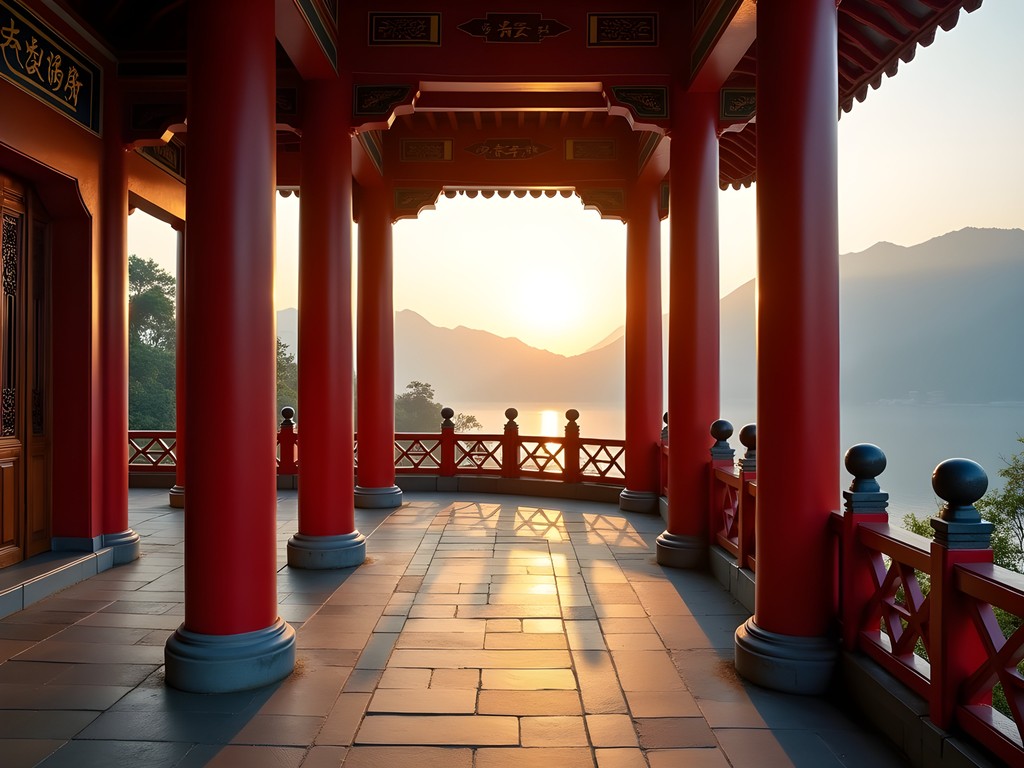
💡 Pro Tips
- Visit Wenwu Temple before 9 AM to avoid tour groups and experience morning rituals
- Look for the 'Year of Steps' at Wenwu Temple—each step represents a year in Taiwan's history
- Bring a small notebook to document temple inscriptions—many contain poetic couplets worth translating later
Thao Indigenous Heritage: Beyond the Buddhist Narrative
While the Buddhist and Chinese religious traditions at Sun Moon Lake are immediately apparent, the area's indigenous heritage requires more deliberate seeking—a pattern I've observed repeatedly in my cross-cultural research where dominant religious narratives often overshadow indigenous ones.
The Thao people, one of Taiwan's smallest recognized indigenous groups with fewer than 800 members, consider Sun Moon Lake their ancestral homeland. Their origin story tells of ancestors who followed a white deer from their original settlement to discover the lake's abundant fishing grounds.
During our second day, Wei and I visited the Thao Cultural Center in Ita Thao village on the lake's eastern shore. Rather than merely observing the scheduled cultural performances (which, while informative, are understandably curated for tourists), we arranged a meeting with a local elder through my university contacts. Elder Sakinu shared insights into the Thao's traditional fishing practices and their contemporary struggles to maintain cultural autonomy while participating in the area's tourism economy.
Particularly moving was witnessing a spontaneous gathering where community members performed pestle music—a rhythmic pounding of millet with wooden pestles that creates complex polyrhythms. This musical tradition, nearly lost during the Japanese colonial period, has been revitalized as part of cultural preservation efforts.
For couples seeking authentic cultural exchange, I recommend staying in Ita Thao village rather than the more commercialized Shuishe Village. We found the Lakeside Inn offered an ideal balance of comfort and cultural immersion, with staff knowledgeable about local traditions and ethical tourism practices.
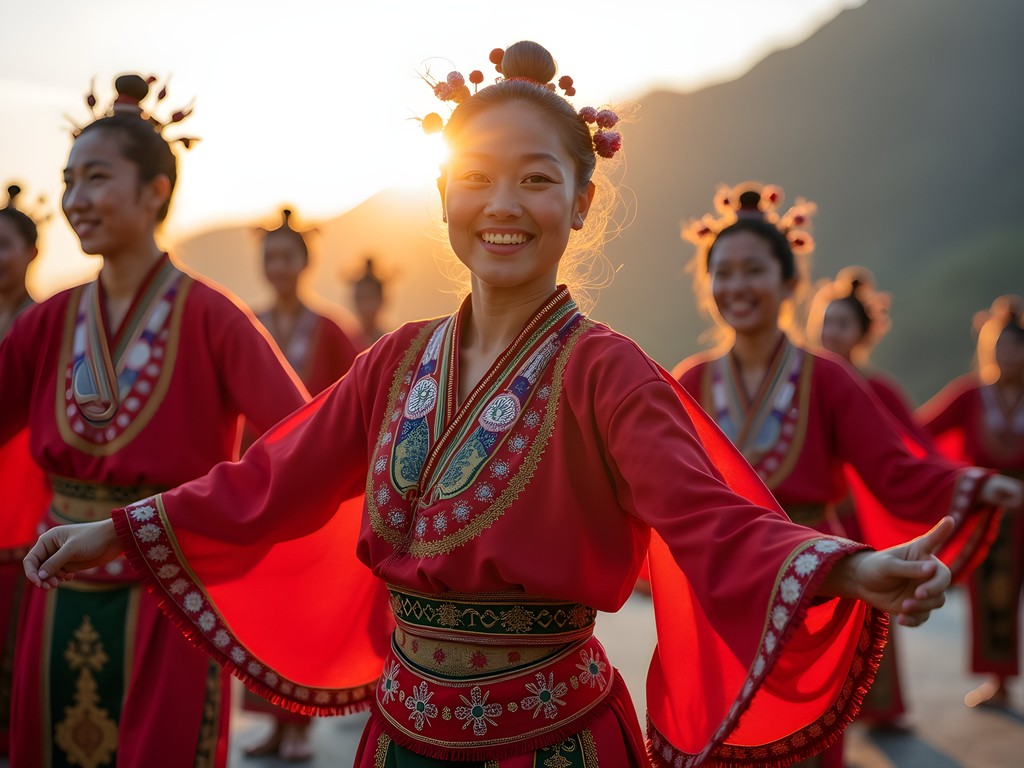
💡 Pro Tips
- Visit the Thao Cultural Center early in your trip to gain context for the region's indigenous history
- Learn a few basic Thao greeting phrases as a sign of respect when interacting with community members
- Purchase handicrafts directly from Thao artisans rather than from larger souvenir shops to ensure economic benefits reach the community
Ritual Tea Culture: Connecting with Local Terroir
The mountainous terrain surrounding Sun Moon Lake creates ideal conditions for tea cultivation, particularly for Taiwan's distinctive black tea varieties. As someone who has documented tea rituals across Asia, I was particularly eager to explore this aspect of local culture.
The region's most renowned tea, Sun Moon Lake Black Tea (日月潭紅茶), was developed during the Japanese colonial period when Japanese agricultural experts crossbred native wild tea plants with Assam varieties. The resulting tea—with notes of honey, cinnamon, and mint—reflects this hybrid history.
Wei and I spent our second afternoon at the Sun Moon Lake Black Tea Cultural Center, where we participated in a traditional tea ceremony. Our host, Ms. Lin, demonstrated the precise brewing techniques that maximize this tea's distinctive character. The methodical ritual—heating the clay teapot, measuring leaves by eye rather than volume, timing each infusion with practiced precision—exemplifies what I've often observed in my research: how everyday practices can embody cultural values without explicit codification.
What distinguishes this experience from other tea ceremonies I've documented is the integration of indigenous Thao perspectives. Ms. Lin explained how traditional Thao plant knowledge influenced tea cultivation practices, creating a unique terroir that reflects both Chinese tea traditions and indigenous environmental stewardship.
For couples seeking a deeper connection, I recommend bringing a portable tea set to enjoy lakeside tea sessions. There's something profoundly intimate about sharing tea while overlooking the misty waters—a sensory experience that connects you simultaneously to the landscape and centuries of cultural practice.

💡 Pro Tips
- Purchase tea directly from small family producers rather than tourist shops for better quality and authentic interaction
- Ask about seasonal variations in tea character—autumn harvests tend to have more complexity
- Learn the basic gongfu brewing method before your visit to appreciate the tea ceremony more fully
Circumnavigating Sacred Waters: The Lake Pilgrimage
While most visitors experience Sun Moon Lake through fragmented viewpoints—a temple here, a village there—Wei and I approached our exploration as a complete circuit, a methodological choice informed by my research on pilgrimage practices. The 33-kilometer path that encircles the lake functions as a natural pilgrimage route connecting sacred sites, much like the circuits around Mount Kailash in Tibet or Lake Biwa in Japan.
Rather than attempting the entire circuit in one day, we divided our journey into meaningful segments, allowing for deeper engagement at each site. The recently completed bike path offers an excellent compromise between mobility and immersion. We rented electric bicycles from a local shop in Shuishe Village, which proved invaluable for navigating the undulating terrain while still maintaining connection with our surroundings.
The western shore reveals expansive vistas across the water to Lalu Island (拉魯島)—a small landmass considered the original home of the Thao people's ancestral spirits. Once much larger, the island diminished significantly after a 1999 earthquake and the subsequent construction of Xuan Guang Temple. This physical transformation embodies the complex relationship between natural disasters, development, and sacred geography that I've documented throughout Asia.
The most profound segment came at dusk along the less-developed eastern shore. As the setting sun cast the mountains in silhouette against an indigo sky, the boundary between physical landscape and cultural meaning seemed to dissolve. In these moments between day and night, with the lake's surface transformed into a perfect mirror, I understood why this body of water has inspired spiritual reverence across multiple cultural traditions.
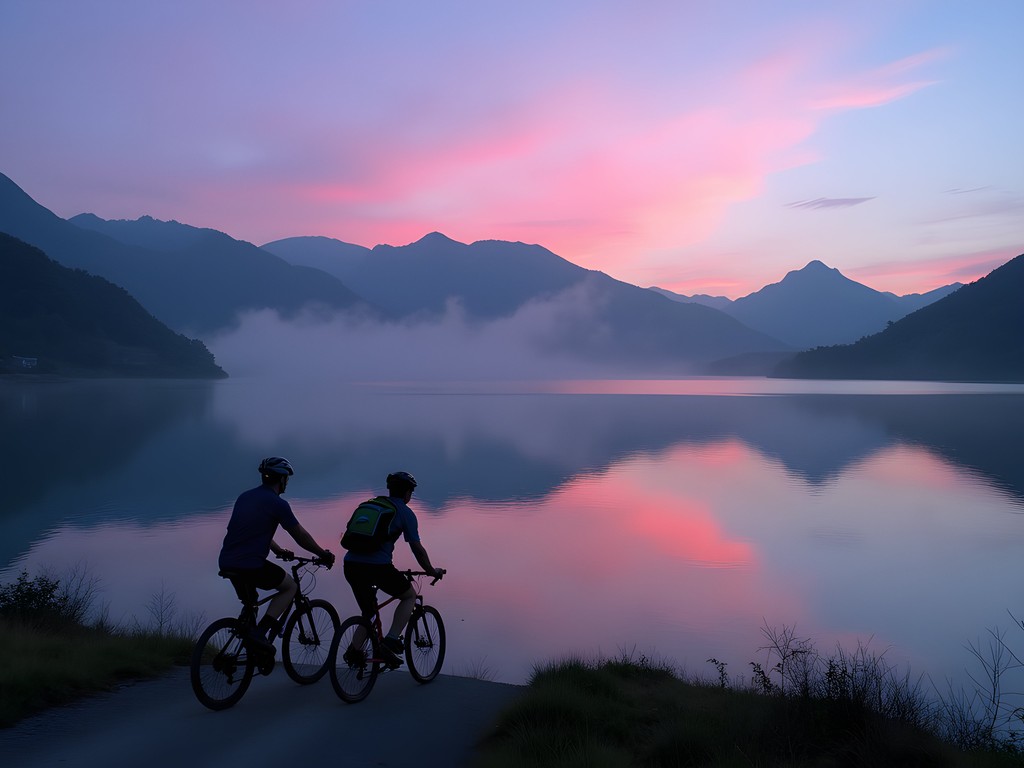
💡 Pro Tips
- Rent electric bicycles rather than standard ones—the hills around the lake are steeper than they appear
- Download a GPS map before your ride as cellular service can be spotty in some areas
- Plan your circuit to reach Ci-en Pagoda near sunset for spectacular photography opportunities
Embodied Spirituality: Hot Springs and Wellness Traditions
No cultural immersion at Sun Moon Lake would be complete without experiencing the region's hot spring traditions—a particular interest in my research on cross-cultural wellness practices. The thermal waters in nearby Antong Hot Spring Village offer a fascinating case study in how different cultural traditions interpret and utilize the same natural resource.
After our cycling journey, Wei and I visited a traditional hot spring facility that maintains separate Japanese-influenced public baths and private indigenous-style stone pools. The juxtaposition provided a tangible example of how colonial influence and indigenous practice have created hybrid wellness traditions throughout Taiwan.
The mineral composition of these springs—rich in sodium bicarbonate with traces of iron—creates water that feels remarkably silky against the skin. Local tradition holds that these waters are particularly beneficial for joint ailments and skin conditions, claims that align with my research findings on balneotherapy across different cultural contexts.
What struck me most was observing the social dynamics within the public baths. Unlike the contemplative silence of Japanese onsen or the boisterous sociality of Korean jjimjilbang, Taiwanese hot spring culture occupies a middle ground—conversation flows naturally but remains subdued, creating space for both connection and reflection.
For couples seeking privacy, I recommend booking a room with a private hot spring bath. Our accommodation, a small family-run inn, featured a stunning outdoor stone bath on our private balcony. Soaking under the stars while discussing the day's cultural encounters created an intimate space for processing our experiences—a practice I've found essential when engaging with unfamiliar cultural contexts. The travel journal I always carry proved invaluable for documenting these reflections before sleep, preserving insights that might otherwise dissolve like the mist over the lake.
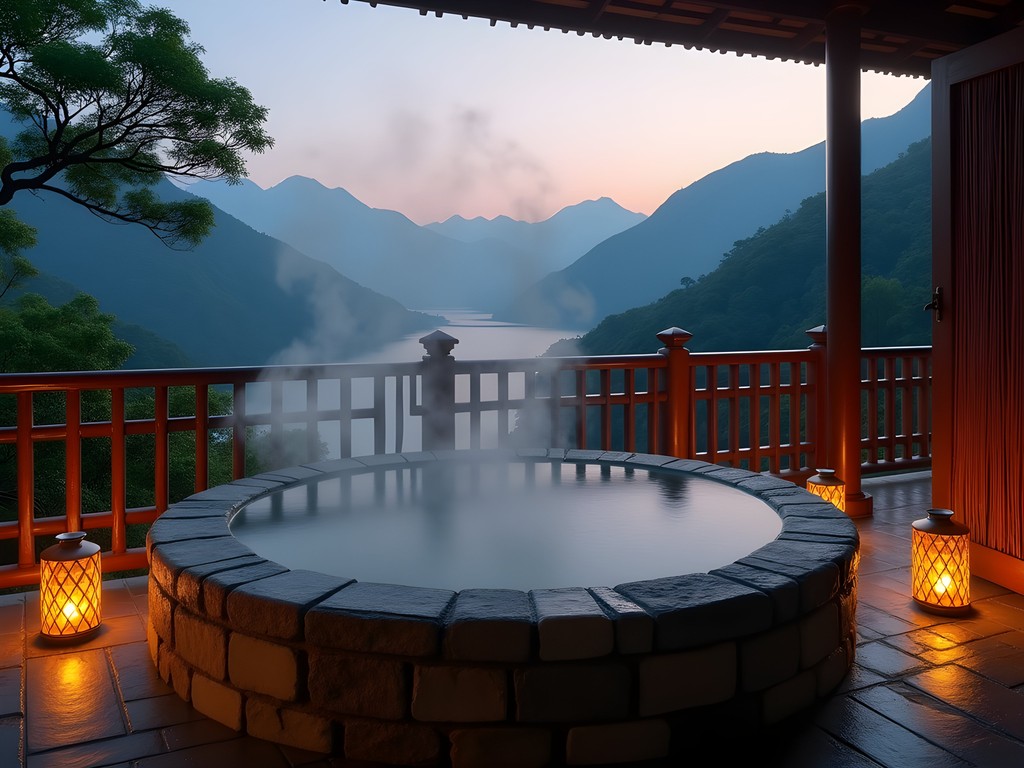
💡 Pro Tips
- Respect hot spring etiquette by showering thoroughly before entering communal baths
- Bring a quick-dry towel as many facilities provide only small hand towels
- Stay hydrated—the mineral content of these springs can be dehydrating despite the comfortable temperature
Final Thoughts
As our weekend at Sun Moon Lake concluded, I found myself reflecting on how this destination exemplifies what I call 'layered cultural immersion'—where multiple historical narratives and spiritual traditions converge in a single landscape. The Buddhist temples, Thao indigenous practices, and hybrid wellness traditions don't merely coexist; they engage in subtle dialogue across time and cultural boundaries. For couples seeking more than scenic beauty, Sun Moon Lake offers a rare opportunity to witness this cultural conversation firsthand. The key lies in approaching the experience with both methodical curiosity and emotional openness—documenting observations while remaining receptive to unexpected moments of connection. Whether you're sipping locally grown tea as mist rises from sacred waters, cycling along ancient pilgrimage routes, or soaking in mineral-rich springs that have healed bodies for generations, Sun Moon Lake rewards the mindful traveler with insights impossible to glean from guidebooks alone. I invite you to experience this remarkable convergence of nature and culture for yourselves—and to discover which layer of Sun Moon Lake's rich heritage speaks most deeply to your own journey.
✨ Key Takeaways
- Sun Moon Lake offers multiple cultural narratives beyond its scenic beauty—Buddhist, Taoist, indigenous Thao, and Japanese colonial influences
- Staying in Ita Thao village rather than Shuishe provides better access to authentic indigenous cultural experiences
- Dividing the lake circuit into segments allows for deeper engagement with specific sites and communities
- The region's distinctive black tea culture reflects a fascinating hybrid history worth exploring beyond tourist presentations
📋 Practical Information
Best Time to Visit
Fall (October-November) for clear skies, comfortable temperatures, and fewer crowds
Budget Estimate
$150-250 per day for a couple including accommodation, meals, and activities
Recommended Duration
2-3 days minimum for cultural immersion
Difficulty Level
Easy To Moderate (Some Walking And Cycling On Hills)
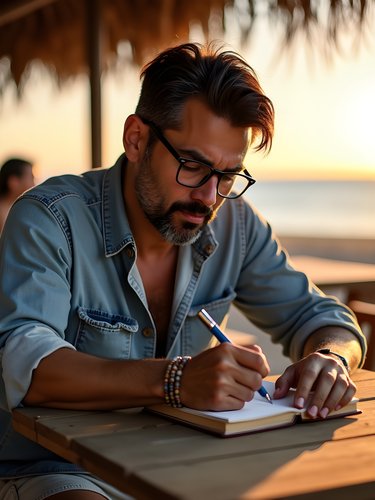
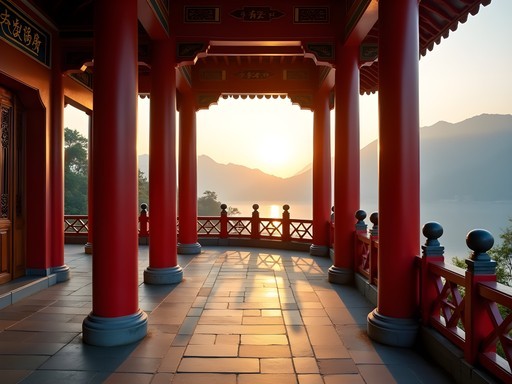














Comments
hikingfoodie
We did the public transportation to get there and it was surprisingly easy! The bus from Taichung runs every hour and drops you right at the visitor center. Way cheaper than hiring a driver.
smartwanderer
Thanks for this tip! Was planning to splurge on a driver but will look into the bus option.
taiwantraveler92
Those misty morning lake photos are incredible! 😍
Douglas Bradley
Excellent cultural analysis, Landon. What I appreciate most about your piece is how you highlight the often-overlooked indigenous Thao perspective alongside the Buddhist traditions. During my research visits to Sun Moon Lake, I've noticed that cultural appropriation can be an issue with some tourists treating sacred rituals as photo opportunities. Did you observe any measures being taken to educate visitors about respectful cultural engagement? The juxtaposition of commercialized tourism with authentic cultural preservation creates fascinating tensions at sites like this.
Landon Ortiz
You've hit on something important, Douglas. The Thao Cultural Center has recently implemented short orientation videos and signage in multiple languages explaining proper etiquette. I was particularly impressed by the youth-led initiatives where Thao teenagers serve as cultural ambassadors at key sites. Still a work in progress, but moving in the right direction.
smartwanderer
This conversation is super helpful! Is there a particular day of the week that's best for visiting the Cultural Center?
Douglas Bradley
From my experience, Wednesdays and Thursdays tend to be less crowded. They also have special demonstrations of traditional music on weekend afternoons, if that interests you!
roamway
Just got back from Sun Moon Lake last month and your post perfectly captures the spiritual energy of the place! The tea ceremony at the lakeside was my highlight too. One tip for others: try to visit Wenwu Temple early morning (before 9am) when it's less crowded with tour groups. The morning light on the lake is magical and you can actually hear the monks chanting without dozens of tourists around.
Douglas Bradley
That early morning temple visit tip is gold! I've found that bringing along a pocket translator helped tremendously with impromptu conversations with locals, especially elderly temple caretakers who often have the best stories but limited English.
smartwanderer
This looks amazing! Did you have any issues with language barriers when trying to learn about the Thao traditions? Planning a trip there in October and wondering if I need a guide.
Landon Ortiz
Great question! While many of the younger Thao people speak English, I'd recommend hiring a local guide for deeper cultural insights. The visitor center can connect you with certified guides who are often Thao themselves.
smartwanderer
Thanks so much! Will definitely look into that.
AsianCuisineExplorer
Love that shot of the tea ceremony! Did you take a class while you were there?
Hannah Woods
Landon, your perspective on 'layered cultural immersion' resonates deeply with my experiences in Taiwan. Sun Moon Lake exemplifies how indigenous cultures and later religious influences can coexist in such harmony. I spent three weeks documenting Thao cultural practices last year, and what struck me was how their relationship with the lake ecosystem informs every aspect of their spirituality. For anyone visiting, I recommend bringing a good travel journal to document the subtle cultural nuances. The morning boat ride with local fishermen was particularly enlightening - they shared stories about how lake conservation efforts are helping preserve both the environment and their traditional way of life. Did you notice how the Thao elders incorporate both animist and Buddhist elements in their ceremonies? That syncretic approach fascinates me.
Landon Ortiz
Hannah, you've captured exactly what makes this place so special. Yes, that syncretic approach was fascinating! I noticed several elders incorporating Buddhist elements while maintaining core Thao spiritual practices. Three weeks there sounds amazing - I'm envious of that depth of immersion!
Hannah Woods
It was truly special. If you return, try to time your visit with the Harvest Festival in autumn - much less touristy than the Dragon Boat events but equally meaningful.
happybackpacker
When exactly is the Harvest Festival? Might be able to catch it on my trip!
Hannah Woods
It usually falls in late October, but the exact dates change yearly based on the harvest. Check with the Thao Cultural Center when you arrive!
happybackpacker
Planning a trip there in October. How difficult was it to get around without a car? Did you stay near the lake or in one of the nearby towns?
Landon Ortiz
Public transportation is actually quite good! The local buses run regularly around the lake. I stayed at a small guesthouse in Ita Thao village - highly recommend for proximity to both nature and cultural sites. The boat services are also reliable for crossing the lake quickly.
escapeguide
We did the public transportation too and it was great. The lake circuit bus makes it super easy to hit all the major spots. Just get the day pass!
escapeguide
Just got back from Sun Moon Lake last month and your post brought back so many memories! The Thao cultural center was definitely a highlight - we caught a traditional dance performance that wasn't even advertised. The mist over the lake in the morning is exactly as magical as you described. Did you try the bamboo-steamed fish? The family restaurant near Xuanzang Temple serves it with local mountain herbs that I'm still dreaming about!
Landon Ortiz
So glad it brought back good memories! I did try the bamboo-steamed fish - absolutely incredible. Those mountain herbs make all the difference. Did you get a chance to participate in any of the tea ceremonies?
escapeguide
We did a short tea tasting but not the full ceremony. Definitely on my list for next time!
TaiwanLover
If you're visiting Sun Moon Lake, try to time your visit with the Thao harvest festival if possible! We stumbled upon it by accident last year and it was the highlight of our entire Taiwan trip. The dancing and music performances were incredible.
Nicole Russell
When does the harvest festival usually happen? I'd love to plan around that for my next visit!
TaiwanLover
@Nicole Russell It's usually in August, but the exact dates change yearly based on their traditional calendar. Best to check with the tourism office about a month before!
Venture X
Premium card with 2X miles, $300 travel credit, Priority Pass